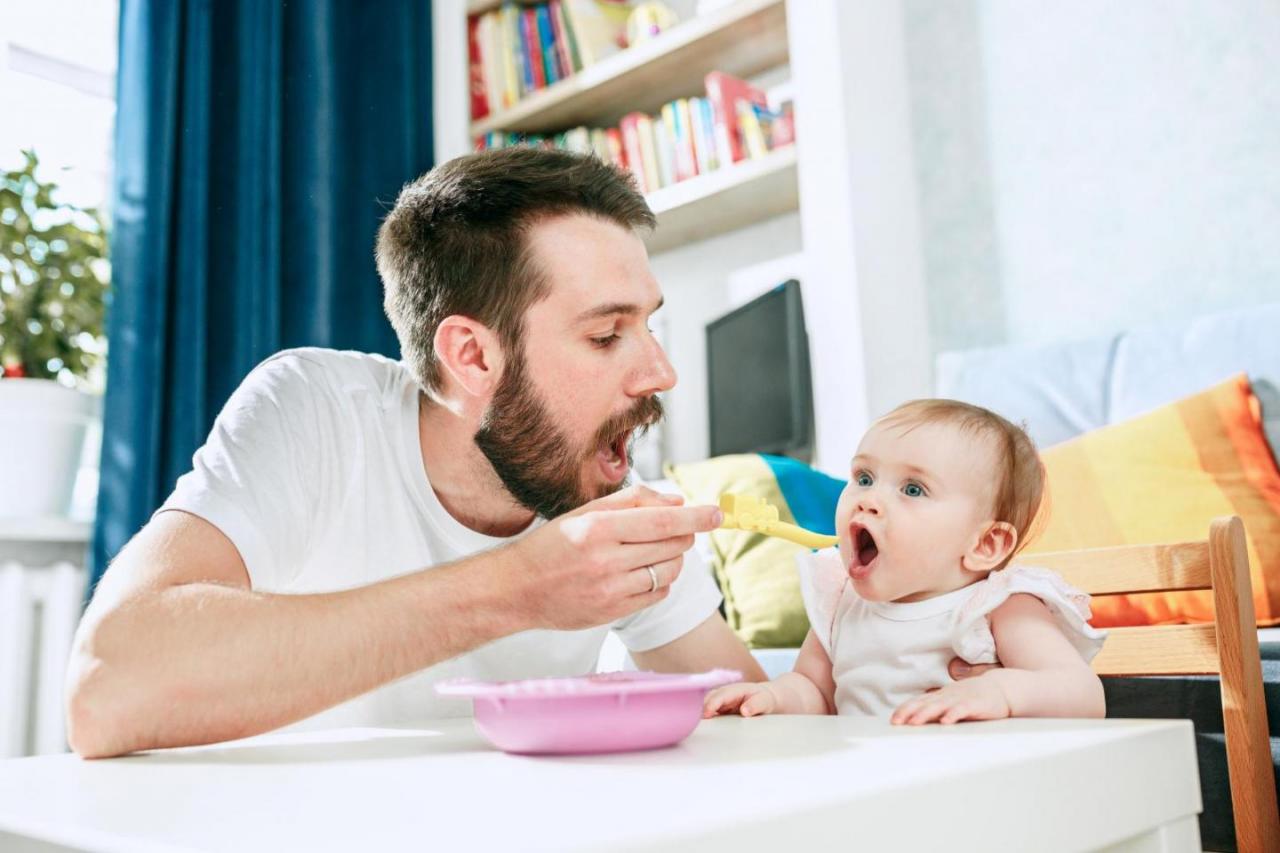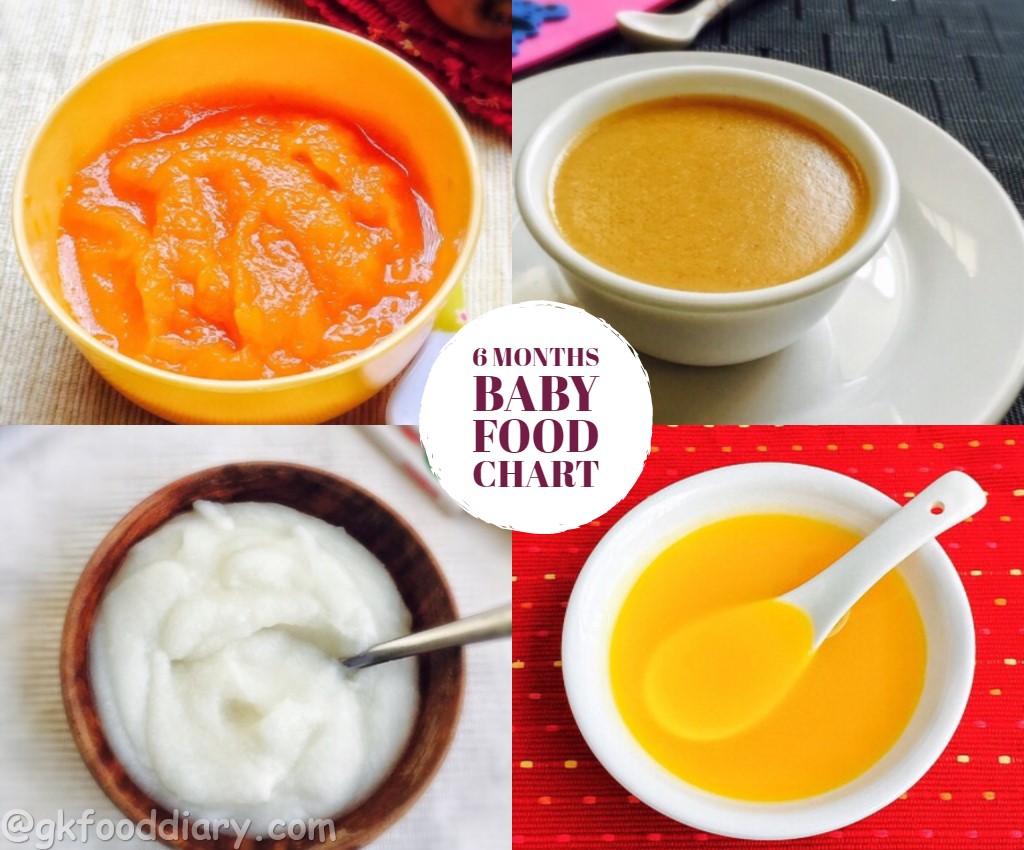There are different approaches to start solids, what you need, and how to actually do it. Starting solids before four months of age is not recommended. And that’s because breast milk is the best food for your baby and can supply all of your baby’s nutritional needs.

If your baby is not receiving breast milk or isn’t interested in breast milk, then infant formula is the only other suitable option for babies under 12 months of age. Also, when a baby is under four months of age, their swallowing is unlikely to be coordinated enough to manage semi-solid food. And their digestive system may not be mature enough to cope with the solid food. Studies have also found that there is an increased risk of allergies when solids are started before four months of age.
How to Know If Your Baby is Ready to Start Solids?
The American Academy of Pediatrics and the World Health Organization recommend waiting until your baby is around six months of age and showing signs of readiness before introducing solids. The signs that your baby is ready to start solids include:
- Your baby can sit with support. They are able to hold their head upright and steady for the duration of a meal, so they have enough head control and they’re also aware of their hands and fingers, so that they can actually participate in feeding, which is something they can generally do at around six months of age. However, at this age, their accuracy is going to be poor and they’re still going to find it really hard to drop an item. Self-feeding at around six months of age is going to be messy and slightly difficult.
- Another key sign for readiness is that your baby is interested in food. So, your baby will be watching intently when you eat food. They may watch the food go from the plate to your mouth. They may start to reach for that food, and they’re opening their mouth when food actually approaches them.
- And the last readiness sign, which is helpful, but not a must have, is that your baby has a reduced tongue thrust reflex. So the tongue itself does not push the food out anymore as soon as it enters the mouth. And this ensures that the food can actually stay in the mouth and move back to be swallowed.
So when your baby is doing all of these things, that’s an indicator that they have the foundational skills needed to safely explore solid food. Once you know that they are ready, you’re probably going to start to wonder about which method you should use for feeding.
Which Method Should You Use For Feeding?
There are three general approaches to feeding:
-
- The baby led-weaning approach where the infant is offered thick finger size pieces of food, which are soft and easily squashed. And the baby independently places that food in their mouth from day one. So basically in this approach, you bypass purees and mashed-up food.
- Then you’ve got the spoon feeding approach. So this is the more traditional approach to feed babies where the parent is in total control. So the parent actually holds a spoon and brings it to the baby’s mouth. And the food served initially are typically puree or mashed food.
- And then you have the combo feeding approach. That’s a mix of spoon feeding and self feeding with finger foods.

Now, there is a lot of debate between people who advocate for the different approaches, but all of these approaches are perfectly acceptable. So I think the important thing is that you actually choose the approach that you are most comfortable with.
What You Need When Starting Solids?
When you start to give your baby solid food, the first thing you need is somewhere for your baby to sit. For some parents, they may actually sit their baby on their lap, but this is actually not the preferred option, because when you first start solids with your baby, it is really important for them to actually see you eating food. You need to model that food is safe and how to actually eat it. And you also need to watch your baby for cues of fullness as well as safety when they’re eating. And you simply cannot do this when they’re sitting in your lap. Instead, I highly recommend using a high chair.
In addition to a proper high chair, you’ll also want to purchase an open cup. It’s really important that you get a small open cup that won’t break or shatter, because your baby will accidentally drop it all the time.
You’ll also want to get some bowls and plates. Now, if you are going to do that self-feeding approach, then bowls or plates that have a rim actually work best. And it’s often helpful to get bowls or plates that will actually suck to the table, because that will limit the ability for your baby to accidentally throw the plate or the bowl off that tray or that table. And if you’re going to use that spoon feeding approach or the combination approach, when you are using a spoon, make sure it’s a small spoon with smooth edges, and the bowl itself is shallow and made from a silicone, because this will ensure that when your baby does bite down on the spoon, it doesn’t hurt them. And the shallow bowl will ensure that when they actually close their lip to clear the food off the spoon, they can actually clear it. Whereas if it’s a deep bowl, it is really hard to initially clear that food off the spoon. Now, something which is often a big issue for parents when they’re starting solids is mess.
How to Minimize the Mess?
So here are a few tips to actually minimize that mess.
Firstly, you might want to purchase a splash mat that can go underneath that high chair or the chair that you’re using, just to ensure that it’s easier for you to clean up.
You might also want to invest in some bibs or smocks. I like the smocks because they go over the top of the baby’s clothes and keep them clean. Now, if you do decide to use a bib, you want to make sure that you get bibs that have a velcro tab at the back, because this will ensure that you just undo that velcro to remove that bib from your baby once they’re finished eating. And this will ensure that they don’t get accidentally covered with food, which will happen if you get a bib where the bib is joined at the back, and to get it off, you actually have to pull it over their face. And this will result in the food going over your baby’s face, and they’ll experience that wet feeling and that can become distressing and put them off meal times.
And another thing you’re gonna want to buy is lots and lots of washcloths. When you are using these washcloths, please make sure that you do not constantly wipe your baby’s face with the washcloth during the meal. Only use these to clean your baby following a meal. And when you are doing it, make sure you do it with a firm stroke. And this will ensure that your baby doesn’t get turned off by that constant cloth going across their mouth, which can be just plain irritating. Also, you want to avoid falling into the trap where you’re constantly scraping your baby’s chin to clear the excess food, because this is also irritating, and can turn them off from having solids.
How to Start Solids?
So your baby is ready, and you have the high chair, and everything you need, then it’s time to start introducing solids. So initially you want to offer your baby solid food once a day. And that solid food should initially be offered after a milk feed or at a separate time. You don’t want to do it at the same time. It isn’t until nine months of age that you actually change that around, and you offer the food before the breast or formula feed.

Now, when you’re choosing a time of day to introduce your baby to solid food, you want to make sure that you choose a time of day when your baby is quiet and relaxed. So typically the afternoons are a bit hectic for everyone. Babies are a bit more whiny, so maybe in the morning or midday is best. And you may like to choose a time when you actually have someone with you, because it can be a little bit stressful at times. And a really important point is that you want to minimize distractions, that means you need to turn off TV and devices, so your baby can focus on the mealtime and you can focus on that mealtime.
Initially you’ll just start with one teaspoon of food or just a piece of food. And you’ll gradually increase the amount of food you’re giving your baby according to their appetite. This is often very concerning for parents, because they often worry that the baby isn’t eating enough, but babies are very responsive to their own needs and feelings of hunger, and fullness. When your baby shows you those early signs that they’re full by just turning away from the food or showing you that they’re no longer interested in the food, then it’s important that you stop giving them the food. You do not want to force-feed them.

As a parent, remember, it’s just your role to choose when to eat the food, what food to give them and at what time, but it’s your baby’s responsibility to choose how much of that food they will eat or if they’ll eat it at all. It’s also really important to remember that learning to eat is actually a process, and it can take your baby some time to get the hang of it. And your baby’s appetite will vary from meal to meal and day to day. Remember their stomach is only the size of their clenched fist. So they don’t actually need a lot of food. As long as your baby is developing and growing well, then it is highly likely that they are eating enough.

